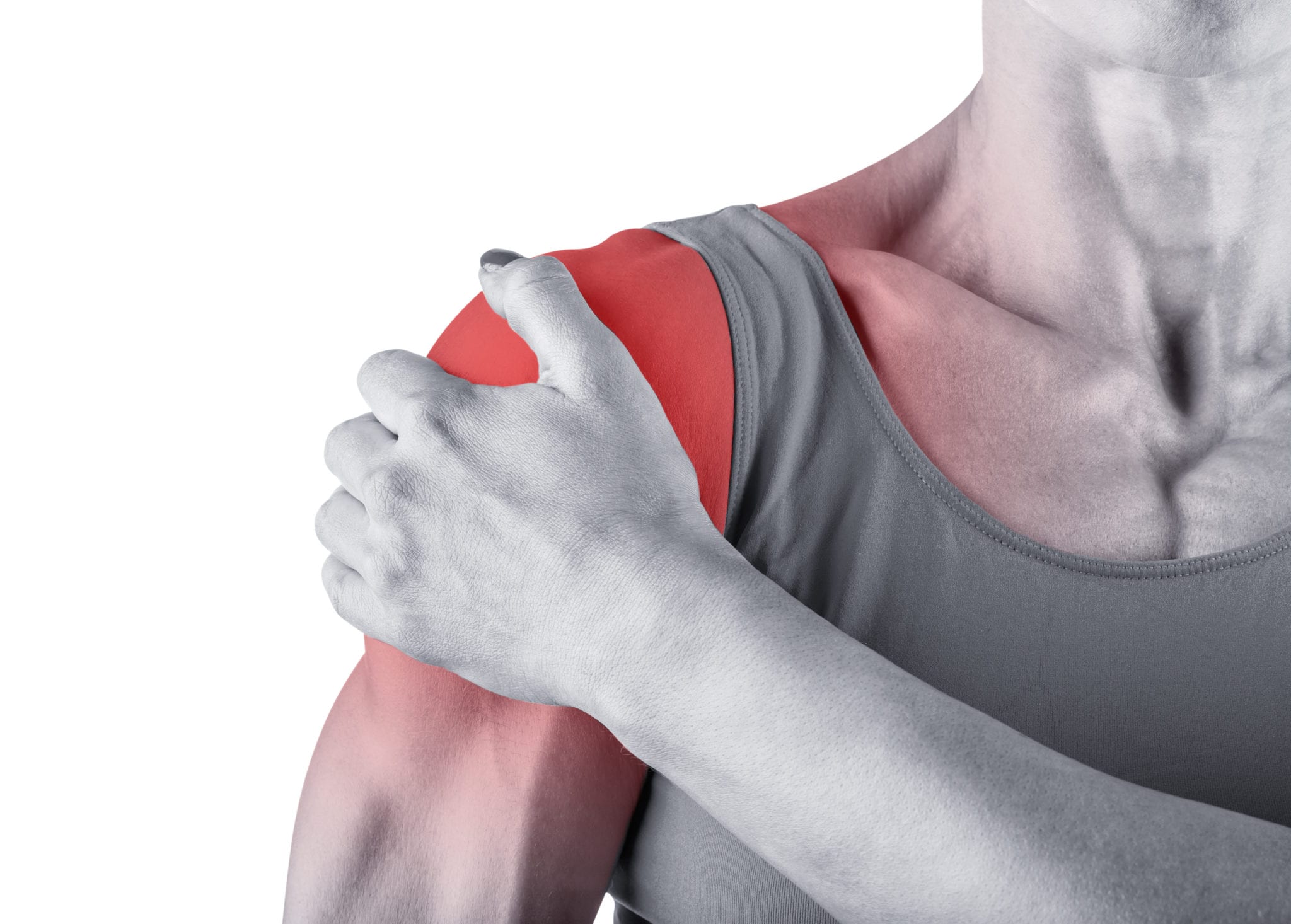Shoulder pain is a common problem, one that usually worsens over time and can impair many sports and daily activities. There are many sources of shoulder pain including arthritis and bursitis, but the most common shoulder problem for many people is injury to the rotator cuff tendons. These tendons are crucial for proper rotation of the joint, and an injury can lead to pain with lifting, reaching, and sports including golf and tennis. If the problem persists, it may result in severe loss of movement. Some patients resort to surgery for injuries to the rotator cuff tendons, but that is often unnecessary and the recovery time for this surgery can be 6-12 months.
The tendons of the rotator cuff all connect at different points surrounding the ball of the shoulder joint and provide strength and control of movement, which is a coordinated symphony of motion when it is functioning properly. When there is injury to any of these tendons, the motion gets out of control, the joint may catch or pop, the range of motion may be limited, and there may be pain with daily activities.
The tendons do not have to be severely torn for pain and dysfunction to occur, although a severe tear can certainly be very limiting. A lesser degree of injury is “tendinopathy” in which the fibers of the tendon become frayed, or the connective tissue may be degenerated and have partial tears. This can occur with aging, sports, and work activities that overuse the shoulder joint. This often leads to “inhibition” of the muscles that are attached to the tendons, resulting in the inability to generate normal force and leaving the arm feeling weak.
Fortunately, this does not need to be a losing battle or a downward spiral. Shoulder pain with rotator cuff tendinopathy can be treated without surgery using Regenerative Medicine / Prolotherapy. Injections of growth factors including Platelet-Rich Plasma (PRP) will stimulate repair of the damaged tendons, often restoring the function of the muscle – tendon unit back to normal. The platelets in your bloodstream contain a vast assortment of growth factors that serve to repair the daily wear and tear on your tissues and joints. When injected directly into painful areas, PRP stimulates repair of tissues that have not fully healed through the body’s normal processes.

Many times the muscles around the shoulder, rotator cuff, and scapula will begin to function more normally once the structures are stabilized using regenerative medicine. Yet, we must also consider what led to the injury, over use, degeneration and pain in the first place. Common strain patterns and less than optimal static sitting postures often lead to muscle imbalance and uneven wear and tear on the rotator cuff. Shoulder stabilization, full range of motion, and maximal performance is – as stated above – a symphony of neuromuscular control which relies on stability throughout the entire body. Regenerative medicine alone is often the answer to the resolution of pain, renewal of function, and return to the activities you enjoy. In Part 2 of this series we will expand on how to minimize the possible risks of re-injury around this fascinating and vulnerable shoulder joint.



